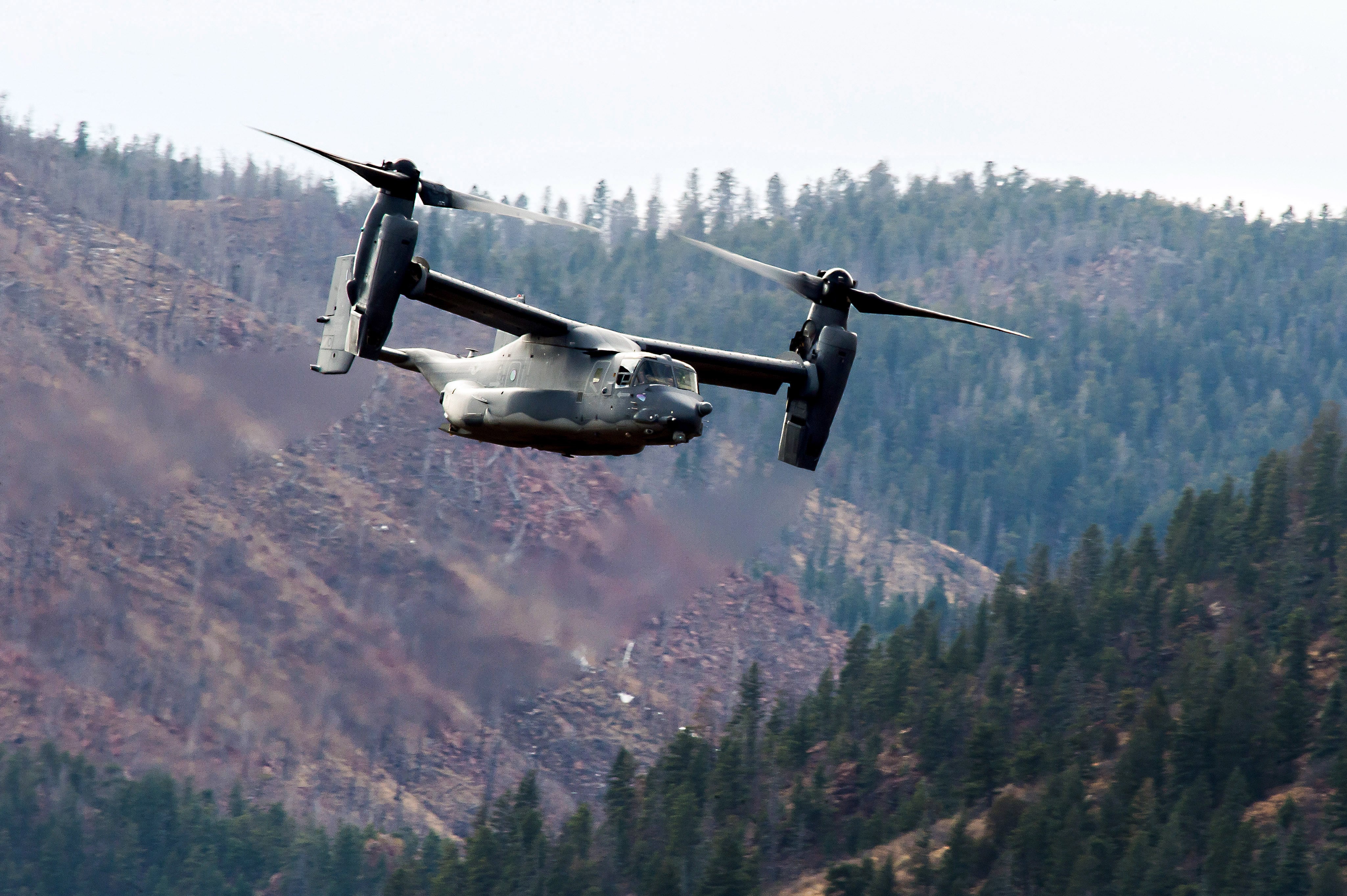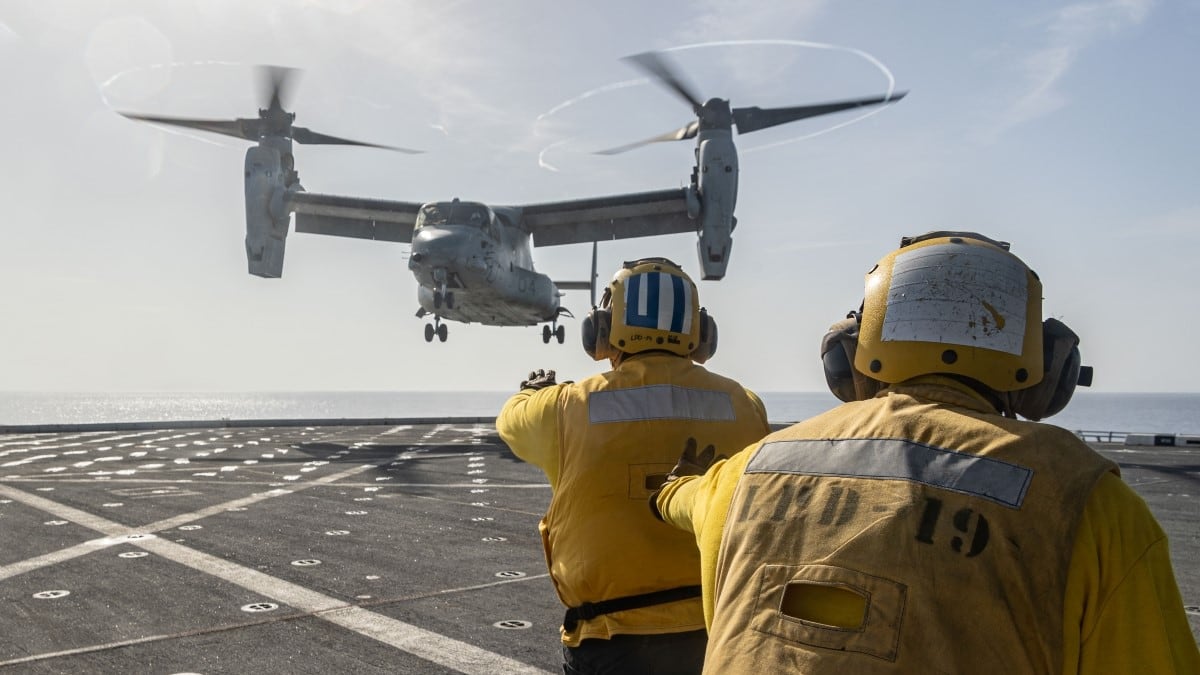After a volcano erupted on Bougainville Island in August, the 31st Marine Expeditionary Unit was tasked with delivering disaster relief supplies across that autonomous region of Papua New Guinea.
Marines and sailors spent 10 days delivering nearly 70,000 pounds of supplies to remote airfields, helped along by the helicopter-airplane hybrid known as the MV-22B Osprey.
But while the Osprey has proven vital to the 31st MEU’s mission there and elsewhere, all services lost the asset in December 2023 when the entire fleet was grounded following a Nov. 29, 2023, crash that killed eight airmen.
As the grounding that cost the unit its 11 Ospreys continues, command officials say they are making do without those assets, even if their loss has cost the Marines some mission endurance.
“Between the other assault-support aircraft and surface connectors, I can still move the same number of things and people,” the unit’s commanding officer, Col. Matthew Danner, told reporters on Thursday. “What it really goes to is if I had to do that over the course of five days in a row, I would struggle to do that in ways that I wouldn’t if I had these 11 Ospreys.”
Danner’s comments reveal the practical implications for Marine expeditionary units losing their Osprey access during the latest grounding.
The November 2023 fatal mishap is not the first time that problems have emerged with the aircraft. The Osprey, which can take off and land vertically like a helicopter and fly horizontally like a plane, has been the subject of safety concerns for years because of a series of deadly crashes.
RELATED

The 31st MEU, a quick-response force forward-deployed in the Indo-Pacific, regularly trains alongside partners in the region near China — “on the pacing threat’s doorstep,” as Danner put it.
The unit began a big training exercise Dec. 4, two days before the V-22 joint program office called for all the military’s Ospreys to be grounded, according to Danner.
This immediately complicated the MEU’s exercise, which involved taking an airfield at Ie Shima, Okinawa, Japan.
Typically, the unit’s aviation combat element would have provided both CH-53E Super Stallions and Ospreys in support of that mission, Danner said. Instead, the unit used its four Super Stallions and seven light attack helicopters to get the job done.
“We were able to still execute an essential task, even without this particular aircraft,” Danner said. “It makes it more challenging, to be sure.”
In the near term, the 31st MEU’s Osprey crews are keeping up their readiness, Danner said.
“Through certain things that we can still do with the aircraft and through simulators, we have the ability to maintain an adequate level of currency,” he said. “If, for example, the service came back and said, ‘You can fly it again,’ within a couple of days, we would be back at 100%.”
The 26th Marine Expeditionary Unit, a similar unit with additional training in special operations, also has had to make adjustments in light of the Osprey grounding.
RELATED

The unit, which is deployed to the Middle East region as the war between Israel and Hamas rages, moved from the Red Sea to the eastern Mediterranean Sea late last month aboard several ships, part of an effort to relieve the long-deployed aircraft carrier Gerald R. Ford there.
If an emergency in the region requires the unit to use Ospreys, Naval Forces Central Command could authorize “limited operations of the Osprey” Marine spokeswoman Capt. Alyssa Myers told Marine Corps Times earlier in December.
Irene Loewenson is a staff reporter for Marine Corps Times. She joined Military Times as an editorial fellow in August 2022. She is a graduate of Williams College, where she was the editor-in-chief of the student newspaper.




